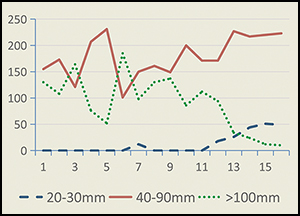Article contents
New radiocarbon dates and the herder occupation at Kasteelberg B, South Africa
Published online by Cambridge University Press: 20 September 2017
Abstract

The archaeological sequence at Kasteelberg B, in the Western Cape of South Africa, spans a millennium and covers several distinct occupational phases in the early pastoralist settlement history of the region. Attempts to understand that history through coordinating archaeological, linguistic and genetic evidence have proved problematic. The refined programme of radiocarbon dating presented here sheds further light on the different phases of occupation. More remarkably, it suggests, despite changes in material culture, the persistence of a single population over time, rather than population replacement as has been previously conjectured.
Keywords
- Type
- Research
- Information
- Copyright
- Copyright © Antiquity Publications Ltd, 2017
References
- 6
- Cited by


